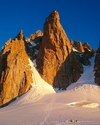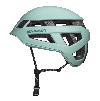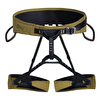Greenland 2010 roundup and Nico Favresse interview

 1 / 32
1 / 32 Favresse archive
Favresse archive
Climbers Nico and Olivier Favresse, Sean Villanueva and Ben Ditto have recently returned from a three month climbing trip to Greenland where they explore huge virgin big walls. The four travelled by sailing boat, accompanied by their skipper Bob Shepton, in their quest for new routes they established nine new routes for a total of 4500m of virgin rock and, an interesting detail, just one single bolt. With their feet now firmly back on land, it's time to find out more.
Welcome back Nico. The expedition sounds like great fun. Was this simply another great trip or something deeper? It was both I think. Great because we were friends just having fun climbing and sailing in a very new way for all of us. Once more we got very lucky with the weather so we did a lot of climbing and the fact that we almost never had to do any approach seemed revolutionary!
But it was a deep experience because we were sailing the same way as the world's first great explorers had done hundreds of years ago. It felt like going back into history except that a long time ago without our modern-day technology it was way more adventurous. It was very nice to have the energy of Reverend Bob Shepton. The funny thing was that technically he is old enough to be our grandfather! He often told us stories of his adventure and I felt like a grandchild listening to his wise grandfather!
"By fair means" – an expression used a lot over the last decade and your Baffin and Greenland trips offer a similar approach. Will we be seeing more of this in the future?
Yes definitely! The more I climb, the more I see climbing has a wider meaning than actually moving over rock. I realised that I am mostly passionate about adventure and discovery. Climbing virgin remote walls “by fair means” is what I aspire. And it’s up to us to have enough imagination to find fair means that are fun! I think we are all very stuck with the tarditional way of climbing, but we sometimes forget that there are no actual rules and for me climbing as an adventure holds the best potential.
Where did the adventurous winds take you?
Well... Not always in the right direction! That’s the thing about being on a sailboat, you are very dependent on the wind and sometimes you need to be patient for conditions to turn to your favour. You can’t be in a hurry. You have to live according to the mood of the elements. But I find this very nice, especially in our modern world where everything is tied to our clocks.
So when the time finally came, how many meters did you climb and how many bolts did you place?
Altogether we climbed a total of approximately 4500 m of virgin rock, without counting the ridge traverses. We placed just one bolt on a slab. We couldn’t protect it and it was too scary and hard to commit. We were simply not brave enough to keep it clean or retreat. There is always room for improvement...
Beside this, the reason why we managed to climb all these new routes without placing bolts was because the rock was marked by a lot of splitter cracks that took the gear perfectly. Sometimes it was under some grass, but there were always enough options to keep us going without placing bolts. With a bit of imagination and experience there is always more pro than at first seems. Sometimes we had to put our comfort to one side in order to keep it clean and it all ran smoothly except for one scary moment when the side of a crack broke and half of our hauling anchor came out!
Sounds like you were extremely lucky indeed. How was the other half the adventure, the return across the Atlantic?
Interesting! Crossing the Atlantic was a strange feeling. On the one hand, to be in such huge open waters was a incredible feeling of freedom but on the other it felt like we were in jail, all stuck on a small boat with no possibilities to get out. As a global experience it was incredible. And looking at maps now it’s so cool to see what we sailed but really on a boat like this, not much happens. It’s pretty slow and mellow except during the storms. Everything and nothing was happening all around us. In addition, since we were in a small boat there weren't many much places to hang out. The seats were converted into bunks so that we could sleep. And a lot of the time the weather was too bad to stay outside. For most of the time the swaying of the boat made impossible to read, unless we wanted to get seasick. So we mainly ended up going back to our bunks, lying there for hours half asleep/ half awake rolling in the middle of nowhere thinking about nothing and everything. It was a great place to get some perspective on life. But I was so psyched when I stepped back on solid ground.
What struck you most on this trip?
I had my worst fall ever! I could have easily died! I fell with a huge boulder that collapsed on me when I touched it. I did a 15 meter factor two fall down a ledgy slab onto our anchor that partly broke. The rock smashed our belay and cut a sling and broke a biner. The ropes got core shot in a few different points but I found myself upside down alive, without anything! It was pure luck! The taste of beer is even better now;-) Joking apart, my belief is that my instinct was not alert enough to avoid this accident. I failed but I am very lucky to be able to use this accident as a learning experience.
The exact same day, my friend Chloe Graftiaux was not as lucky when she fell in the Chamonix area and died. I was very shaken by the news and even more by the coincidence. She didn’t deserve to die so young.
Yes, certainly, words fail. Nico, you've been actively new routing worldwide. Tell us about your approach, style and ethics with which you take to new routing.
For me there isn’t one way of doing things. Every route is different and there is a lot of room for "grey area". That’s why it’s important to think well before acting. But the best option is always to keep things as clean as possible. So ideally no bolts, no pitons, no slings left behind, no chalk nor rubber on the rock. But that’s just an ideal that would be pretty hard for most climbers (myself included, of course) to follow. What is important is to keep this in mind as an ideal and to never think that the way I do my climbing is the best and only way. There is always room for evolution. And the evolution as I see it should lead us to learning how to enjoy climbing with minimum impact. Climbing should always feel like a pilgrimage.
What about on existing routes?
When I try to free an already established route, what is crucial for me is to respect the original route. And respecting it for me means to keep it as much as possible the way it was originally put up. The person who made the first ascent made a series of choices in the way he opened his route for people to experience it a certain way, and I try to respect this. For me a lot of the time this extra challenge contributes significantly to the enjoyment of the actual free climbing. By adding bolts to a line, in most cases it totally changes the experience of the climbing. In most cases it reduces the experience to the mere physical aspect. This is especially the case on aid climbs where the difficulty is so related to the pro and the fear factor comes into play. On the other hand, in my own view, I encourage any action to clean certain routes from bolts and pitons when the evolution of the gear doesn’t justify their use anymore.
At times though a peg or a bolt are needed to progress...
When an aid line seems impossible to me and where I find a variation from the aid line that can go free, I tolerate the addition of a minimal amount of bolts if I can’t find any other ways of protecting myself (even this is very subjective when you see how certain climbers protect themselves on certain routes in the UK for example) and that I am far enough away from the aid line so that someone aid climbing the aid route cannot reach the bolt or get confused thinking that the route might go that way. As you can understand, it’s not always that clear. Sometimes your limits force you to headpoint some of the scarier pitches or just wait for somebody stronger/bolder to do it. Usually this makes it pretty difficult or almost impossible to repeat such routes ground up. I would hope, and I would look up to them, that other climbers wouldn’t allow themselves to place bolts on a variation. For me placing a bolt is always a form of weakness where the climber chooses to reduce the challenge and experience that the rock can offer.
So what are your golden rules?
- Keep it real and for yourself first.
- It’s up to your mind to turn failure into success
- Our ethic isn’t ever the best and only one.
- There are infinite possibilities everywhere. It’s up to your mind to make up the challenges. The climbing game can be played by many rules.
- Lower your ego. It’s proud to accept your limits
- Think of your impact and future generations
- Be cool
- Have fun
- Play music
- And finally, the most important, keep the babes away :)
Nico Favresse
Factsheet - the routes
Generally the climbing in the Upernavick area was very adventurous with lots of grass in the cracks, thick lichen and seagulls vomiting on us, and walls that start straight out of the water but the rock (under the grass) was really good quality. It made it very challenging to climb on-sight, dig the grass for pro (getting covered with dirt) fighting with the seagulls and dealing with lichen friction holds. Any pitch was always a real challenge!
The south (Cape Farewell area) is a more alpine environment with mountains and glaciers covered with granite spires. The rock is really clean with perfect cracks. Certain routes we put up were so clean we could have never tell it was a FA or a 50th repeat. It was a nice contrast after the adventures in Upernavick area.
Upernavik area
July 2nd :FFA Red Chili Crackers 350m 5.12- R on the Red wall (that’s how we called it/probably the first ascent of the wall) - team: Olivier and Sean
July 2nd : FFA Seagull’s garden 400m 5.11 on the Red wall – one bolt was placed on lead to protect a slab (the only bolt we placed on the expedition) - Team: Ben and Nico
July 6 : FFA Brown balls wall 400m 5.12- (all free except for a 10 meter very wet and dirty section which would not be hard to freeclimb in good conditions) on the Brown balls wall (that’s how we called it/ probably the first ascent of the wall) - team: Olivier and Ben first 3 pitches / Nico and Sean the rest.
July 11-22 : FFA Devil’s brew 850m 5.12+ on the Impossible Wall (that’s how we called it/ probably the first ascent of the wall) – 11 days/ 3 portaledge camps (no bolts) – Team: Olivier, Nico, Ben and Sean. We topped out with everything and walked down the back side.
Cape Farewell Area
August 16 : FFA Corned beef 450m 5.11 on Shepton Spire (that’s how we called the spire- not sure if it was the FA of the spire) then climbed a very scenic ridge leading to the summit of another spire on the East side of Shepton spire- Team: Ben and Sean
August 16 : FFA Condensed milk 450m 5.11 on Shepton Spire then climbed a very scenic ridge leading to the summit of another spire on the East side of Shepton spire – team : Nico and Olivier
August 20 : FFA Never again 500m 5.10 on Angnikitsoq (not sure if it was the FA of the wall) – team Bob Shepton, Sean and Nico
August 21 : FFA Chloe 550m 5.11+ OW(offwidth) Angegoq Tower on Quvernit Island then followed the ridge the summit of Morel Tower and then the summit of Asiaq Tower - team: Olivier and Sean
August 21 : FFA The Chinese Gibe 550m 5.11+ OW (offwidth), Angegoq Tower on Quvernit Island then followed the ridge the summit of Morel Tower and then the summit of Asiaq Towe. One pitch was freed on toprope due to a scary fall with a rock. We found one bolt and a couple of rap anchors on the lower part of the wall so we are not really sure of what was done before, we found no info about who placed the bolt.– Team: Ben and Nico
Thanks to the sponsors: Belgian Alpine Club, Patagonia, Five Ten, Black Diamond, Petzl, Seeonee, Yeti , Sterling rope, Careplus , Milo, Julbo, Cab brabant, Belclimb.net, Climb.be.
| Links Planetmountain | |
| News Favresse | |
| News Greenland | |
| Links Expo.Planetmountain | |
| Expo Petzl | |
| Expo Five Ten | |
| Expo Black Diamond | |
| Links www | |
| www.xpedition.be | |



 Copia link
Copia link

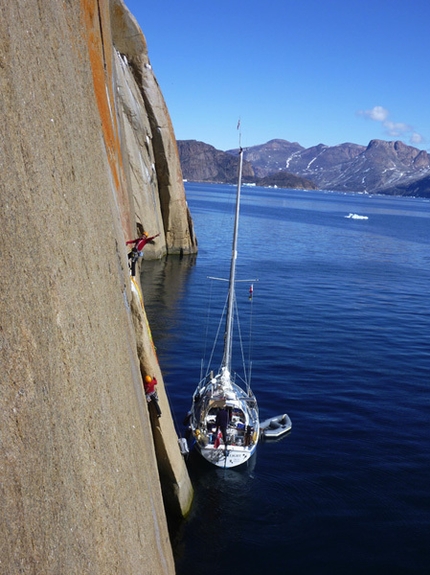

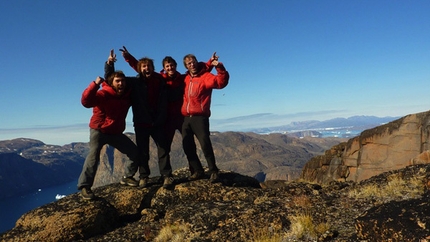
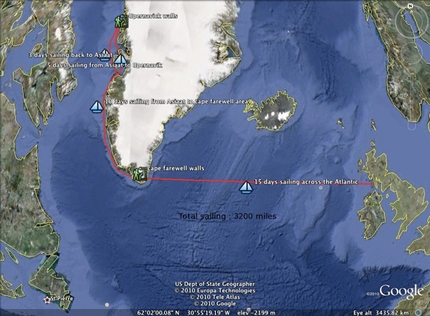


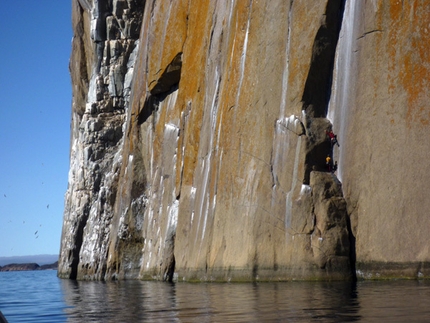
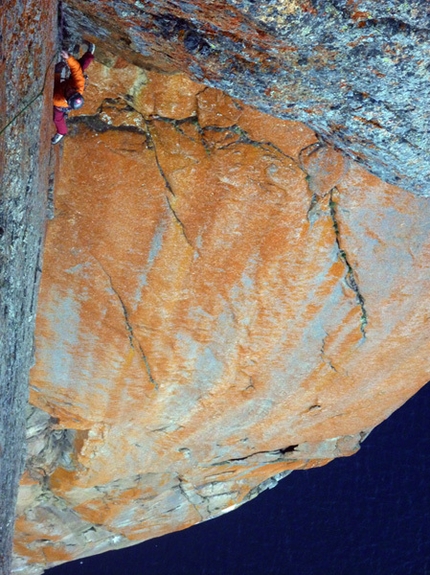
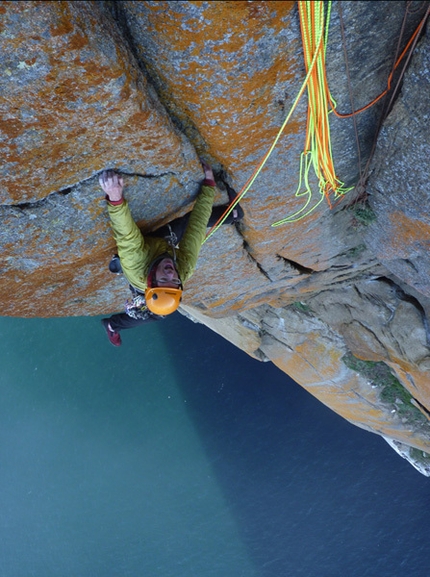
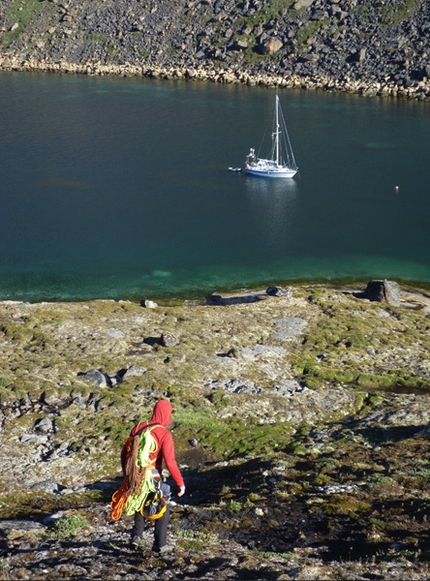


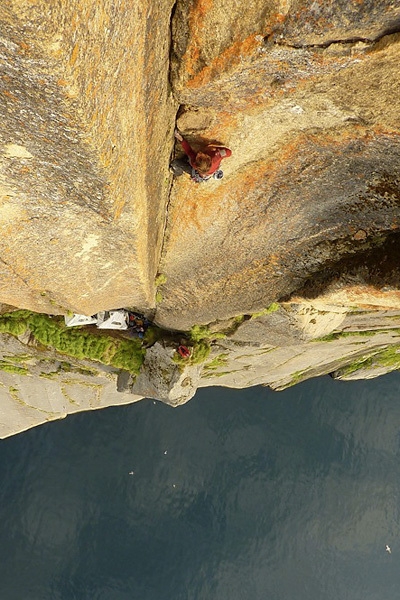
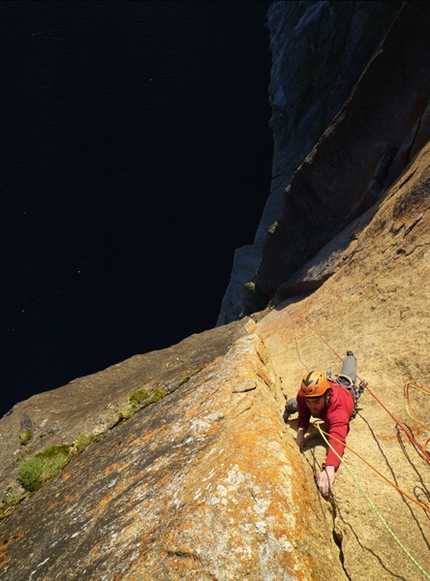
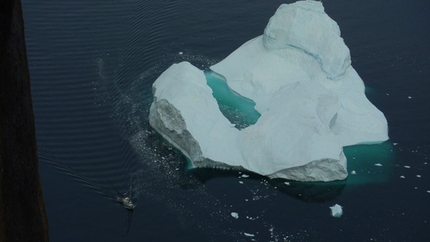
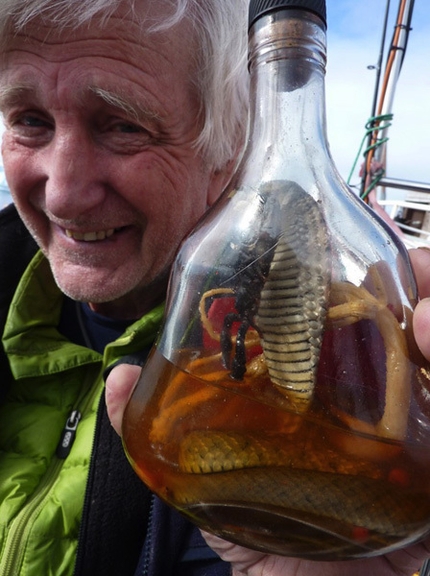

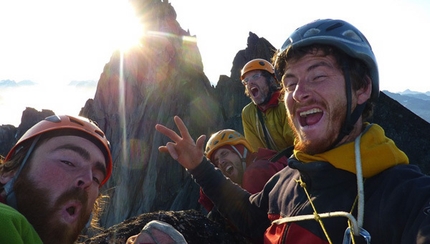
 See all photos
See all photos




